DMZ guest blog by: Rokham Fard, DMZ EiR
Content marketing: it’s something that almost every company does, but few do it exceptionally well. Regardless, it is a tool that should be a part of every startup’s arsenal.
If your startup has little budget or no online audience, mastering your content marketing via your company website’s blog is a great place to start building your brand awareness and converting your audience into customers. The great news? Your content strategy is something you can learn to master with little to no budget. And – when you do it right – years down the road you will have built promotional assets.
This article is two-fold: it covers both the creation and promotion of your blog content. Learn how to structure your blog writing, choose an appealing topic, and repurpose your content in your email and social media marketing efforts. Best of all, along the way you’ll get simple hacks you can use to satisfy web algorithms and skyrocket your online engagement.
Your startups’ content strategy can take several attempts of trial and error – but hit that sweet spot start, and you’ll be seeing real return on your efforts.
Choose a winning blog topic
Picking the right blog topic requires careful consideration. When doing this, you mustn’t improvise and assume the whole world cares about what you think is top-of-mind for your customers. Selecting a subject matter should be a data-driven process – not hypothesis-driven.
Anchor your topic around a question or problem
Don’t throw all kinds of messages out there and hope one sticks. It’s not about frequency of content. It’s about doing the right one, and then spending a lot more time getting it out there. It’s crucial to vet your topic before you start writing. You need to find out what the external world is asking about the topic you want to write about.
The easiest method to gather information around the world’s questions is to Google it. You’ll want to anchor your blog around a certain phrase or question. Try it: as an example, search “coping with anxiety”. How many people are searching that in a month? In Canada? In the U.S.? If a lot of people are searching for it, you know there is market demand. Your search phrase should have between 1,000 to 10,000 monthly searches for your geographical audience (if your target audience only lives in Canada, try incorporating U.S. searches to reach that 10,000). Another great tool to vet your topic is UberSuggest.
Write the best answer on Google
Once you’ve identified the question you’re going to answer, the magic is to offer a solution to that question or problem that is subjectively better than the first ten results on Google.
The reality is, almost no one checks the second page of Google. If you are able to be subjectively better than all those ten combined, then your answer will be considered better to the user. Algorithms on Google are fully optimized for that. If you are taking the right steps for SEO, you will eventually rank up.
Trust is one of the most important aspects required to build a relationship with potential customers and retain existing ones. You build trust by addressing someone’s problem better than they can, then offering them a solution.
The only way you can do that is if you are a subject matter expert who can offer insights that come from deep knowledge. Companies will oftentimes hire a content writer who is remote and cheap to employ. What happens when you hire someone who doesn’t have expertise in your subject matter? They go to Google, they search your key phrase and regurgitate the same information that the top articles on Google have already written about. Your blog writer should be a subject-matter expert.
If you can articulate someone’s problem better than they can, that is a great start to building trust and gaining loyal followers.
Re-think the structure of blog writing
If you’d like to write something people are going to read, think of your content as a prescription. We were taught to write using a certain skeleton: the intro and hypothesis, point one, point two, point three and the conclusion.
These days, and on the web especially, consumers typically don’t have the time to read your essay. They came to your blog to ask a question, to get an answer.
Adopting a new style of writing by putting the carrot upfront: what will a reader get from this post? Get them on the edge of their seat; give them a promise upfront. Then, move into your solutions: one, two, three. And, at the end, there’s no conclusion per se – it’s a summary.
The three layers of content within a blog: macro, micro, nano
Young startups often avoid spending the time to produce quality blog content and opt for short-term marketing wins, which will become more expensive in the long run. What many don’t realize is that you can invest more time and resources in creating one blog, and you’ll end up producing content that can be repurposed for various channels over an extended period of time.
There are three layers of content produced here: the macro, the micro and the nano. Why is it important to distinguish between these three layers? Well, they each provide value to your marketing strategy in different ways.
The macro is the entire blog post. One of the more frequently asked questions around blog post creation is the length of your posts. Try to write around 2000-2500 words per post. While that may sound like a lot, you must remember how much noise is out there to compete with. Additionally, if you were to cover a topic and only had 500 words to work with, it’s hard to give the subjectively best answer to your reader’s question. I’ll touch on why this is important, and tips for having the subjectively best answer again soon.
Furthermore, a longer blog will also reap benefits from a technical perspective: with richer, denser content, your website’s blog will appeal more to search engines’ machine learning. For example, Google’s semantic analysis is strong enough to understand your content’s focus and will do so more easily with denser content – improving your online search visibility.
Next comes the “micro” layer of content. Your blog post should yield three to five main topics or solutions (which we’ll touch on soon). Each one of those solutions can be thought of as a micro-sized piece of content. Micro content can be leveraged in for your email newsletter, for example. Build a drip campaign using this content where every email covers one of the three to five solutions outlined in your blog post. If you write one article for your blog and have, on average, four solutions in one article, that will equate to four weeks worth of drip campaigns! By the time you have 10 articles, you’ll have 40 weeks of campaigns.
Finally, the “nano” layer of content consists of the even smaller bits buried within those solutions – they are the bite-sized, action-driven solutions that are derived from each micro. This is the content that will feed your social media.
Let’s size it up. A macro piece equals three to five micro pieces and about eight to 12 nano pieces. All of a sudden, you have eight to 12 social posts – and for the next month, you have something new every few days for your social channels.
That’s how you stay top of mind. Re-purpose your content strategically, and you’ll gain the mindshare of your audience.
Promote the hell out of your content
You have a piece of content… now, what do you do with it?
The general rule of thumb is that 20 percent of your time should go towards creating your content and 80 percent towards promoting. You’ve vetted this idea for your blog and you know there’s demand – now take the time to get your content out there.
With your blog content, you can leverage both long and short term gains. The long term effect is that you’re going to start getting ranked on Google. If you have given the best answer on the internet, you’ll start ranking higher on search engines. The short term gain is that you have content that’s ready to be promoted. Remember, the micro and nano layers within your blog have helped you distinguish this content. You won’t need to think about new topics for your email newsletters, and you won’t need to hire someone to keep your social media alive. Don’t operate in silos – repurpose that content!
Cater to the social platform’s algorithm
Take a look at your LinkedIn feed. You’ll probably notice examples of these nano posts.
How do you ensure your LinkedIn posts perform well? You have to cater to the platform’s algorithm. LinkedIn’s platform, like many other social platforms, prioritizes 1) relevant content, and 2) engagement. The more your posts play into what the algorithm likes, the more eyes you will get on your social content. If you want more engagement on your posts across social media channels like LinkedIn, here are some hacks to consider.
First, when you create your post based on your nano, never include the link back to the article if you don’t have to. It’s counterintuitive. When someone is scrolling through their LinkedIn feed, do they really want to stop and read a 2000 word article? No. Think about where your audience’s head is at. Your LinkedIn posts should act as nuggets, intriguing them to want to hear more about what you’ve got to say. Second, if you are linking your article within your LinkedIn post, you’re not catering to the platform’s algorithm. Whether it’s Facebook, Twitter, or LinkedIn – each one of these platforms is biased towards keeping the user on the platform. They don’t want a user to leave the platform, they make money by keeping them around. This is another reason to avoid linking out to your website. I’ve seen up to ten times the engagement when I don’t link out to my article.
If you feel like your post needs a call-to-action, I would suggest signing off with the same hashtag at the tail end of each social media post. This is good for brand awareness, and when someone clicks on your hashtag, they’ll see everything you’ve published. Even more important, the click from the user is a signal to the platform’s algorithm for engagement.
Something else to consider is that algorithms also have a bias towards posts that use an image.
Go where your audience already hangs out
If you don’t have a huge audience yet on your brand’s social channels, don’t worry. I don’t recommend trying to build a big audience right off the bat. It can be expensive and you can do it gradually. What I would recommend is for you to go to where your audience already hangs out to promote the hell out of your content. There are two great places to do this for free: Facebook and Reddit.
There are Facebook pages on just about every topic out there. Go to Facebook’s search engine. In the search bar, search using your keyword or the topic you’ve written about. Change the filter to search Pages, and you’ll find Pages who are interested in learning about your topic at hand. Find a page that has at least a couple thousand followers. Look at their newsfeed. What type of content is being shared? Do they give love to any third-party content? If they do, you can message the admin and explain why your article would provide value to their audience. Ask them to share it – you’d be surprised how many times they’ll do it. This can drive more traffic to your own Facebook page, and hopefully, your website too.
Reddit can be a hit or miss as behaviours can be very inconsistent with the users and admins, but it can be a highly effective way to engage your target audience. There are thousands of subreddits about every topic under the sun. You can use Google to find subreddits. Find some subreddits that are relevant, and post your article in those subreddits – but not as you are promoting it. Why is this important? The moment Reddit sniffs that you are self-promoting, they will remove you from that Subreddit. Post it as if you are an observer – as if you stumbled across this resource on the web that you thought was worth sharing.
Take these Facebook and Reddit tactics into consideration. Try each platform at least once – find a few gems, and in a couple posts’ time, you can come back to these great audiences! A lot of these audiences might convert to subscribers – and who knows – maybe even customers of your business.
If done correctly, Facebook and Reddit can help your content take off.
Conclusion: practice makes perfect
Keep in mind that your blogging strategy is an ongoing cycle. Prioritize quality over quantity. There’s no need to produce a new post every week, it will become exhausting. The more you can invest in promotion, you will end up finding the right audience.
When it comes to perfecting content writing and promotion, there’s not always a one-size-fits-all solution. It starts with getting confident about vetting the right topic for your blog post and structuring your article in a way that’s easy to consume. Once you have a quality article written, learn how to leverage the micro and nano nuggets of information that come out of each blog post. You’ll start to see success in your analytics and get into the rhythm of things.
While there’s so much more that can be covered, the truth is that strategies are ever-changing as technology becomes smarter and consumer behaviour shifts.
If you begin implementing the tactics outlined in this article, you’ll get comfortable working in a way that caters to your consumers’ thinking. Take that with you as the digital environment continues to evolve, and you will have greater success in adapting your content marketing to fit the needs of your business.



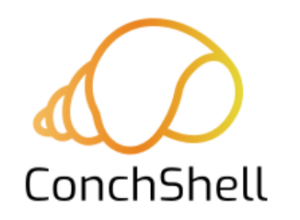
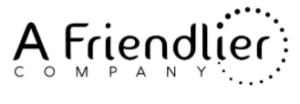
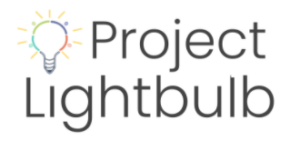
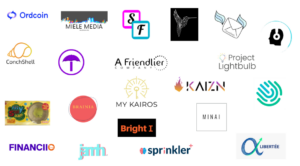
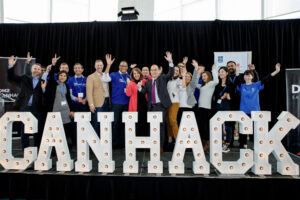



 Off2Class
Off2Class Fasken
Fasken
 DMZ has partnered with
DMZ has partnered with  Andrew Wells is the CEO of
Andrew Wells is the CEO of 
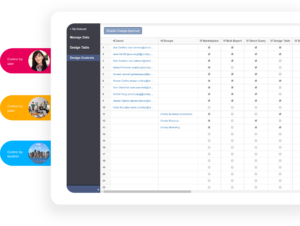 COVID-19: making a difference across industries in the months to come
COVID-19: making a difference across industries in the months to come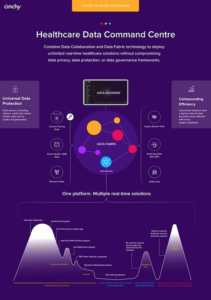
 Think back to when you started your company. Was it you and your cofounder working around a kitchen table? That’s when your legacy approach was first formed. How you made decisions together, how you defined your priorities, how you structured your company. Then you grew from a team of four to eight to 16. Your organizational structure was solidified, and your early culture was born. As you went from your series A round to your B round, you gave investors different rights and you established different classes of shares. All of this defined how decisions would be made and who had a seat at the table.
Think back to when you started your company. Was it you and your cofounder working around a kitchen table? That’s when your legacy approach was first formed. How you made decisions together, how you defined your priorities, how you structured your company. Then you grew from a team of four to eight to 16. Your organizational structure was solidified, and your early culture was born. As you went from your series A round to your B round, you gave investors different rights and you established different classes of shares. All of this defined how decisions would be made and who had a seat at the table.




 The idea for PocketHealth began with a simple experience that my brother, Harsh, had while he was working in the Bay Area in Silicon Valley. He was playing tennis and sprained his ankle quite badly. He was required to get an MRI and an X-ray, and when he was done with that MRI, he was handed two CD-ROMs.
The idea for PocketHealth began with a simple experience that my brother, Harsh, had while he was working in the Bay Area in Silicon Valley. He was playing tennis and sprained his ankle quite badly. He was required to get an MRI and an X-ray, and when he was done with that MRI, he was handed two CD-ROMs. Can you tell us more about PocketHealth’s product?
Can you tell us more about PocketHealth’s product? We’re having Directors of medical imaging and CEOs of hospitals calling us saying, “We needed this yesterday”. We’ve increased the number of sites deploying on our platform by over 300 percent monthly as imaging clinics and hospitals across North America grapple with this problem.
We’re having Directors of medical imaging and CEOs of hospitals calling us saying, “We needed this yesterday”. We’ve increased the number of sites deploying on our platform by over 300 percent monthly as imaging clinics and hospitals across North America grapple with this problem.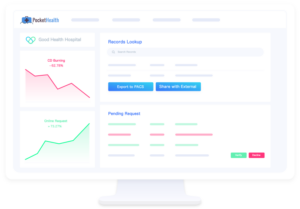 We have some exciting deployments outside of our traditional geographic markets that will be announced soon. This is definitely a global issue. We know that patients’ desires to be in touch with what’s going on in their bodies are universal. It transcends geographic and political boundaries. The product and infrastructure we’ve built it on is designed to scale globally very quickly.
We have some exciting deployments outside of our traditional geographic markets that will be announced soon. This is definitely a global issue. We know that patients’ desires to be in touch with what’s going on in their bodies are universal. It transcends geographic and political boundaries. The product and infrastructure we’ve built it on is designed to scale globally very quickly.


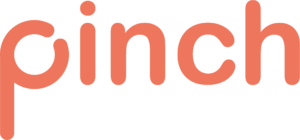 Why did you start Pinch?
Why did you start Pinch? Can you tell me more about Pinch’s time at the DMZ?
Can you tell me more about Pinch’s time at the DMZ?
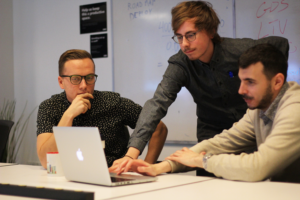 What’s next for Pinch?
What’s next for Pinch? Ashu, what are you most looking forward to in the future?
Ashu, what are you most looking forward to in the future?